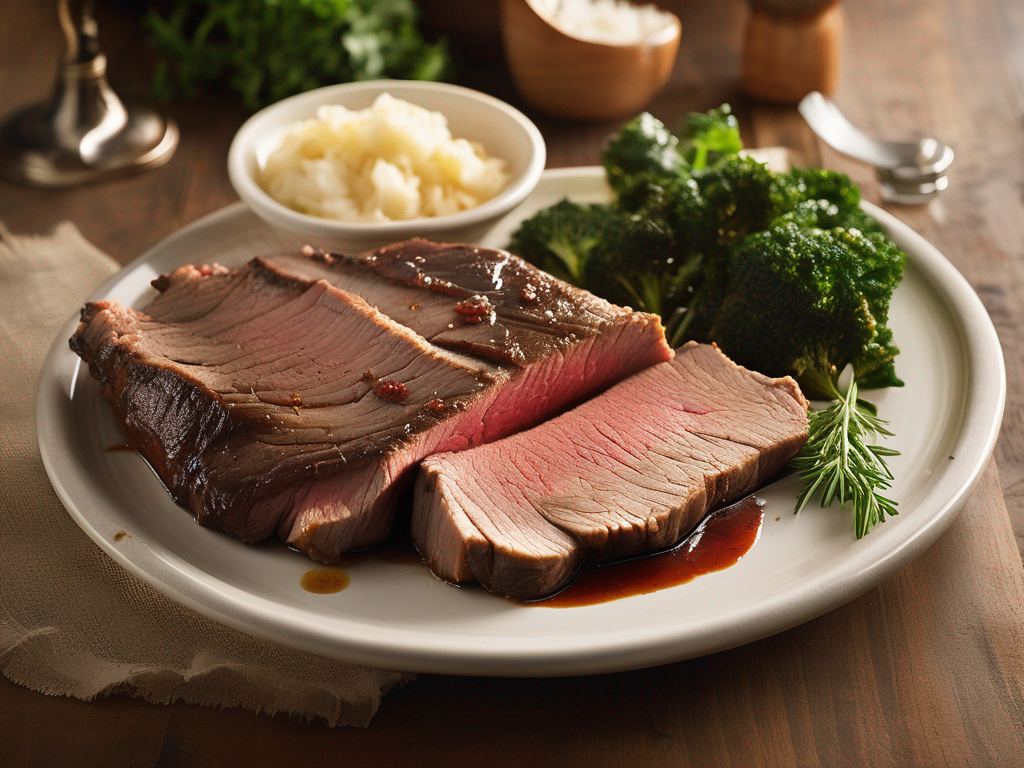
How to Safely Reheat Cooked Beef Brisket Without Drying It Out
Get Your Free Food Safety Cheat Sheet
30 most common foods with instant answers. Print it and stick it on your fridge—completely free!
How to Safely Reheat Cooked Beef Brisket Without Drying It Out
Cooked beef brisket is a delicious and hearty dish that many people enjoy. However, reheating it can sometimes be tricky, as you want to avoid drying it out. In this guide, we will explore the best methods for safely reheating cooked beef brisket while keeping it moist and flavorful. (Cooked beef brisket)
Understanding the Importance of Proper Reheating
When it comes to reheating cooked beef brisket, it's essential to do so safely to prevent the growth of harmful bacteria. Improper reheating can lead to foodborne illnesses, which can cause symptoms such as nausea, vomiting, diarrhea, and more serious health issues in some cases. By following the correct reheating methods, you can enjoy your leftover beef brisket without compromising your health.
Tips for Safe Reheating
Here are some practical tips to help you safely reheat cooked beef brisket:
-
Refrigerate Properly: Store leftover cooked beef brisket in an airtight container in the refrigerator within two hours of cooking to prevent bacterial growth.
-
Use a Food Thermometer: When reheating brisket, ensure it reaches an internal temperature of at least 165°F (74°C) to kill any bacteria present.
-
Avoid Cross-Contamination: Use separate utensils and cutting boards for raw and cooked meat to prevent the spread of bacteria.
-
Reheat in Small Portions: If you have a large amount of brisket to reheat, do so in smaller portions to ensure even heating and prevent drying out.
-
Add Moisture: To prevent the brisket from drying out during reheating, consider adding a splash of broth or barbecue sauce to keep it moist.
Methods for Reheating Cooked Beef Brisket
There are several methods you can use to safely reheat cooked beef brisket while keeping it juicy and flavorful:
-
Oven Method:
- Preheat your oven to 250°F (120°C).
- Place the brisket in an oven-safe dish and cover it with foil to trap moisture.
- Heat for about 30-45 minutes, or until the internal temperature reaches 165°F (74°C).
-
Slow Cooker Method:
- Place the brisket in the slow cooker with a bit of liquid (broth, sauce, or water).
- Cook on low for 4-6 hours, or until heated through.
-
Sous Vide Method:
- Vacuum-seal the brisket in a bag and place it in a sous vide water bath set to 140°F (60°C).
- Heat for 1-2 hours to ensure thorough reheating.
-
Microwave Method:
- Place the brisket in a microwave-safe dish and cover it with a damp paper towel.
- Heat on medium power for short intervals, checking and stirring frequently to prevent overheating.
-
Grilling Method:
- Preheat your grill to medium heat.
- Wrap the brisket in foil and heat on the grill for 10-15 minutes, turning occasionally.
Conclusion
Reheating cooked beef brisket can be done safely and effectively with the right methods. By following proper food safety guidelines and using the appropriate reheating techniques, you can enjoy your leftover brisket without compromising its taste or texture. Experiment with different methods to find the one that works best for you and enjoy a delicious meal every time you reheat your cooked beef brisket.
For more information on cooking, storing, and reheating [cooked beef brisket](/food/cooked beef brisket), check out our other informative articles on food safety and storage. (Cooked beef brisket)
Related Posts
Here are some other articles you might find helpful:
Authoritative Food Safety References
These agencies and university labs inform every tip and health precaution we publish.
USDA FoodKeeper – Cold Storage Guidelines
Official refrigerator, freezer, and pantry timelines maintained by the U.S. Department of Agriculture.
Visit USDA FoodKeeperFDA Produce Safety Rule & Grower Guidance
Field-to-fridge handling practices that prevent contamination of fruits, vegetables, and leafy greens.
Visit FDA Produce SafetyCDC Foodborne Illness Prevention Hub
Surveillance-backed guidance on pathogens, symptoms, and steps to reduce foodborne illness risk.
Visit CDC Food SafetyUC Davis Postharvest Technology Center
University research detailing optimal storage atmospheres for produce after harvest.
Visit UC Davis PostharvestPenn State Extension – Home Food Preservation & Safety
Peer-reviewed extension bulletins on safe canning, chilling, and reheating practices.
Visit Penn State ExtensionGet Your Free Food Safety Cheat Sheet
30 most common foods with instant answers. Print it and stick it on your fridge—completely free! Want more? Upgrade to the complete guide with 70+ foods.
Scan your food directly and get instant safety info using our AI-powered camera feature.